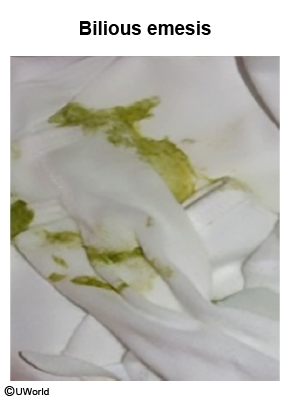Malrotation
Article Sections
Introduction
Malrotation is a congenital anomaly in which the intestines undergo incomplete physiologic rotation during embryological development. Complications include intestinal obstruction and/or volvulus with classic manifestations of bilious emesis in infancy.
Pathogenesis
At 4-6 weeks gestation (video 1), the midgut undergoes rapid growth that cannot be accommodated by the embryonic abdominal cavity. It therefore physiologically herniates through the umbilical ring while undergoing a 90-degree counterclockwise rotation. It returns to the abdominal cavity by 10-11 weeks gestation and turns an additional 180 degrees (270 degrees counterclockwise total). This rotation allows the intestines to attach to the parietal peritoneum of the posterior abdominal wall, creating a wide mesenteric base that extends from the duodenojejunal flexure (attached via the ligament of Treitz) in the left upper quadrant to the cecum in the right lower quadrant (
Continue Learning with UWorld
Get the full Malrotation article plus rich visuals, real-world cases, and in-depth insights from medical experts, all available through the UWorld Medical Library.
Figures
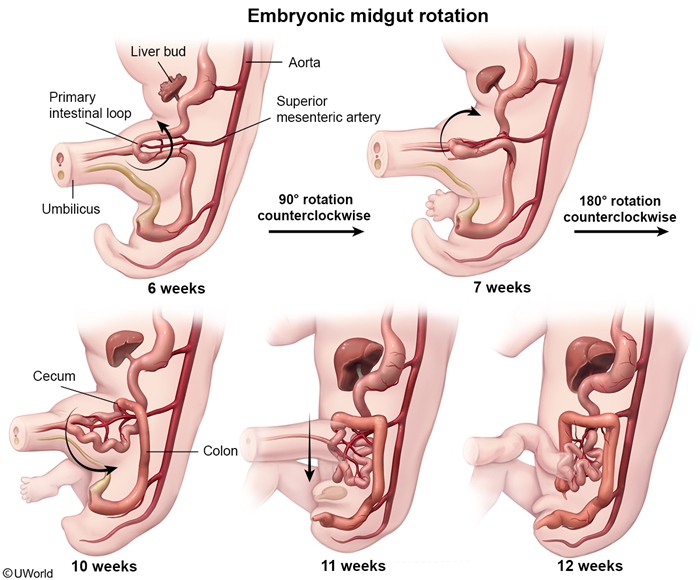
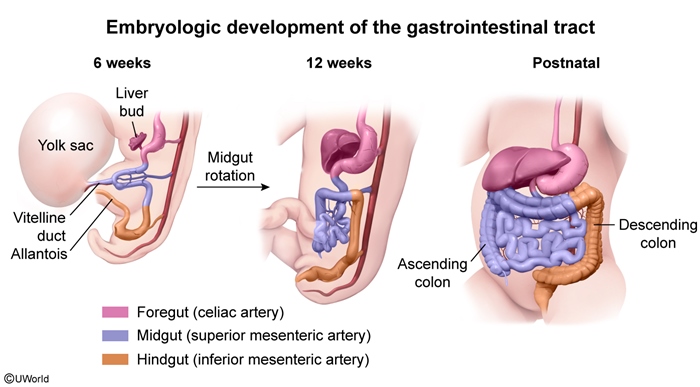
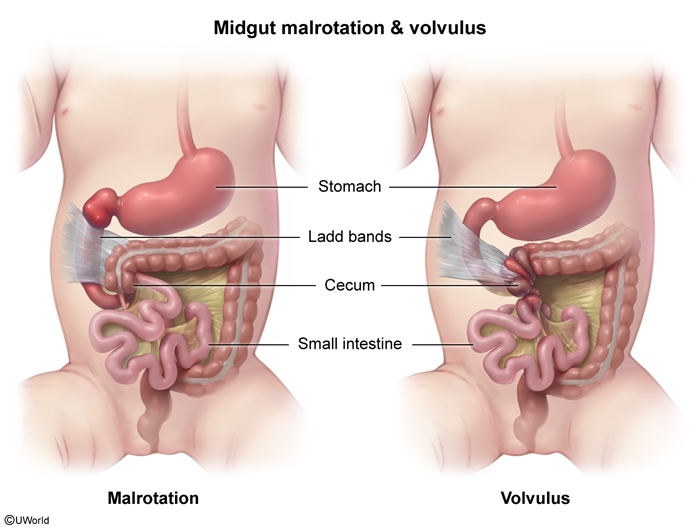
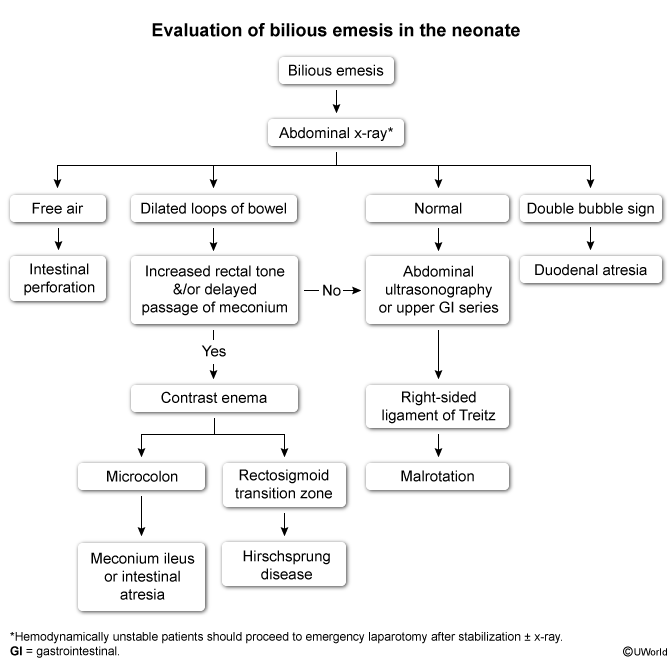
Images
